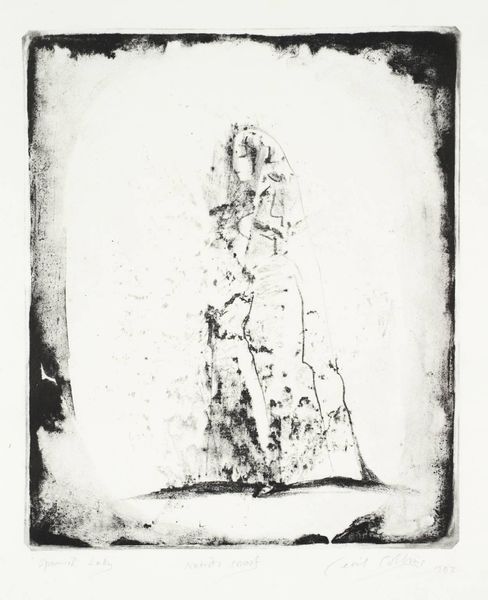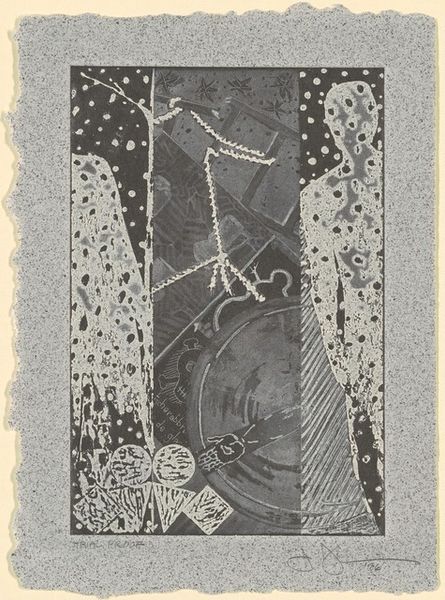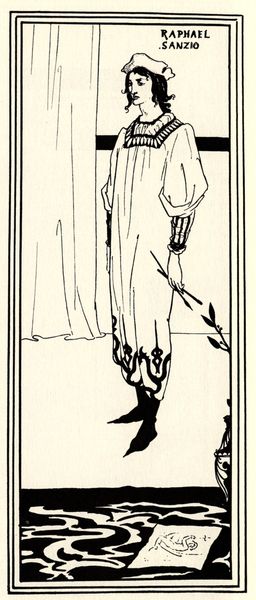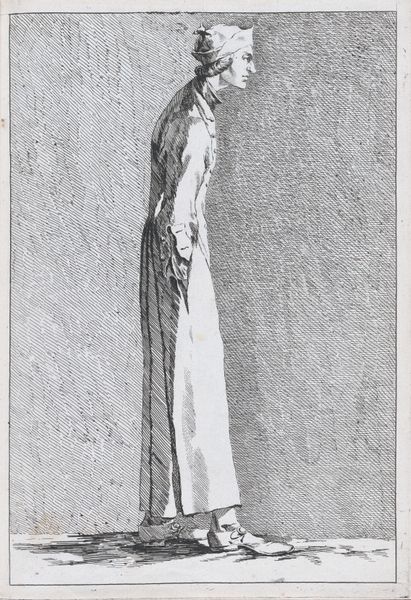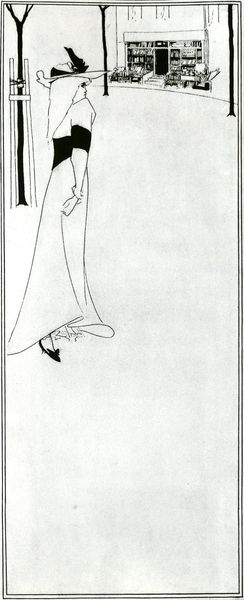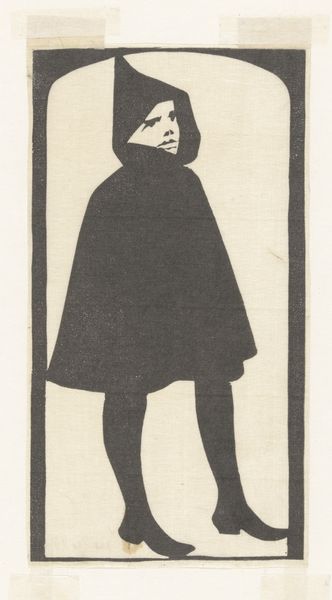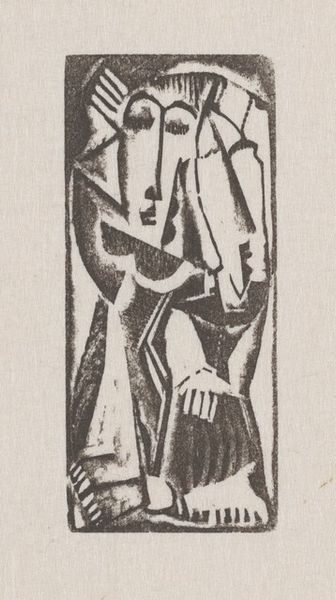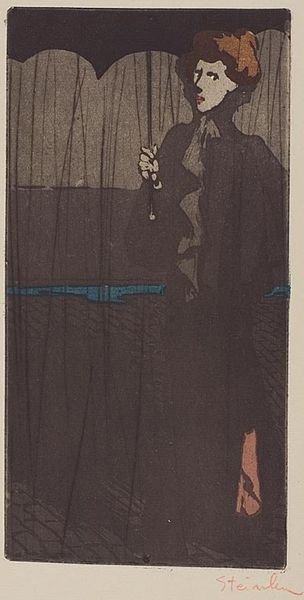
drawing, ink, pen
#
portrait
#
drawing
#
art-nouveau
#
pen illustration
#
figuration
#
ink
#
linocut print
#
pen-ink sketch
#
line
#
symbolism
#
pen
Copyright: Public domain
Curator: Immediately, I see this stark black-and-white image, a drawing called "Katharina Klafsky" created using pen and ink in what appears to be the Art Nouveau style. There’s a strange gravity and formality that almost borders on unsettling. Editor: Yes, there’s an intense, almost spiritual aura emanating from the figure. Beardsley, with his masterful control of line, uses an economy of strokes to project an almost operatic sense of melancholy and defiance in this portrait of the Austrian dramatic soprano. One might say that the figure carries an internalized psychological burden. Curator: She's swathed in white, almost as if being cleansed. But is it absolution or sacrifice? White often carries those dual meanings within a patriarchal symbolic structure. Her averted gaze and the contrast with the turbulent, dark bottom half, certainly create that dichotomy, a power struggle between her perceived innocence and the external, perhaps imposed, darkness. Editor: Indeed. Notice the very precise use of symbols throughout the work: the flowing, organic lines characteristic of Art Nouveau are combined with an almost medieval sense of restraint. I sense Beardsley's deliberate gesture, as if carefully staging an allegory where Klafsky becomes the archetype of a tragic heroine from mythology, like Iphigenia awaiting sacrifice or a sorrowful prophetess. Curator: That intersection of art nouveau and the medieval—I see it. I also feel that in making Klafsky a symbol, Beardsley strips away some of her agency as a female artist. Is he celebrating her or confining her to a role dictated by societal expectations of women in that era? How might the original audience in the late 19th Century interpret it compared to our contemporary feminist reading? Editor: Ah, an astute observation about agency. Perhaps it's the tension between individual and archetype that gives this image such a lasting charge, even now. Klafsky, the woman, disappears to a grander theatrical tableau, one in which beauty and grief are eternally bound, playing out their tragic duet in the shadows of collective consciousness. Curator: Exactly. Ultimately, it becomes an uncomfortable, beautiful paradox. The art lies not just in the rendering of Katharina Klafsky, but in provoking questions of her place—or lack thereof—within the narratives projected onto her image, an enduring struggle women in arts still confront today. Editor: Yes, and those are all compelling aspects to ponder when considering Beardsley's enduring testament to both the beauty and the burden of performance, captured for all time in this seemingly simple, potent image.
Comments
No comments
Be the first to comment and join the conversation on the ultimate creative platform.
